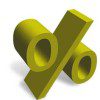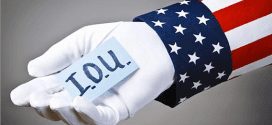Four economic conditions need to be in place for interest rates to rise ahead of – and independent of – the Fed’s forward guidance. The economy met only one of those conditions to date but will likely meet all four by the end of the year…What follows is a status report on the four conditions.
independent of – the Fed’s forward guidance. The economy met only one of those conditions to date but will likely meet all four by the end of the year…What follows is a status report on the four conditions.
The above introductory comments are edited excerpts from an article by Ashley Kindergan (thefinancialist.com) entitled The Signs of a Bond Market Reckoning.
The following article is presented courtesy of Lorimer Wilson, editor of www.munKNEE.com (Your Key to Making Money!) and has been edited, abridged and/or reformatted (some sub-titles and bold/italics emphases) for the sake of clarity and brevity to ensure a fast and easy read. This paragraph must be included in any article re-posting to avoid copyright infringement.
Kindergan goes on to say in further edited excerpts:
When the 4 economic conditions, deemed to be needed according to James Sweeney, Chief Economist for Credit Suisse’s Investment Bank, happen a market that is currently pricing for a September 2015 rate hike is likely to move expectations forward.
Below is a status report on those 4 conditions.
1. Credit Markets Turn Frothy: Happened A While Ago
As of mid-July,
- high-yield borrowers paid, on average, a premium of 3.48 percentage points over Treasuries,
- well below the already historically low 5.11-point spread at this time last year and
- light years away from the 21.82% peak in December 2008 and
- the 5.29% average yield for high-yield bonds is the lowest it’s been in a decade.
Concerns that tight credit spreads and low market volatility might threaten financial stability prompted Kansas City Fed President Esther George to advocate raising short-term interest rates faster than currently anticipated in the Federal Reserve’s dot survey. In a July 3 speech, however, Yellen said that she sees no imminent need to tighten policy based on financial stability concerns.
2. Inflation at 2%: Just Happened
Core CPI inflation, which does not include food and energy prices, has increased steadily in 2014, from a January reading of 1.6% to 2% in May.
Credit Suisse rates strategists noted in a report last month that Yellen has waved away inflation worries for now, “calling the evidence of a rise in inflation ‘noisy,’ and striking a relatively dovish tone despite acknowledging the high degree of uncertainty a number of times.” That kind of talk, they add, puts the Federal Reserve in danger of falling behind the curve when it comes to the market’s reaction to inflation data going forward.
3. Improving Global Growth Momentum: Happening Now
Growth in global industrial production (measured on an annualized rolling three-month basis) slowed from 5.3% in November 2013 to 3.4% in June. Idiosyncratic regional factors drove the slowdown, chief among them being the twin effects of a brutal winter and inventory overhang in the U.S.
Credit Suisse’s fixed income team says improving U.S. manufacturing data and rising levels of new orders in recent PMI surveys suggest that global industrial production momentum may have troughed in June. The team expects it to accelerate through the fourth quarter, and for global GDP growth to grow 3.3% in the second half of the year.
4. Unemployment Below 6%: Should Happen By Year-End
The U.S. unemployment rate hit 6.1% in June, and Credit Suisse economists expect it will fall to 5.8% by the end of the year, a whisper away from the 5.2-5.5% range the Fed considers “full employment.”
In a June 18 press conference, Yellen said declining labor force participation rates indicate lingering slack in the labor market. If those frustrated workers resume their job searches as the economy strengthens, she added, the downward march in unemployment should slow. A recent analysis by Credit Suisse economists, however, suggests that declining participation rates are more structural than cyclical, and that even if unemployment dropped a full 1% over the next year, any resulting increase in the participation rate would be an insignificant 0.05 to 0.1 percentage points, making Yellen’s hypothetical unlikely.
Conclusion
The Fed’s dovish signals to this point are understandable. Economic activity, while improving, isn’t back where it needs to be. U.S. GDP, for example, is expected to rise just 1.5% this year, the slowest growth rate since 2009 but the doves’ days seem numbered.
As soon as next month, Credit Suisse expects the Fed outlook to become more balanced as central bankers zero in on an exit strategy from more than five years of near-zero interest rates, and once that happens, the long-awaited bond market reckoning is likely to finally make an appearance.
Editor’s Note: The author’s views and conclusions in the above article are unaltered and no personal comments have been included to maintain the integrity of the original post. Furthermore, the views, conclusions and any recommendations offered in this article are not to be construed as an endorsement of such by the editor.
*http://www.thefinancialist.com/the-signs-of-a-bond-market-reckoning/ (© Copyright 2014 Credit Suisse)
Stay connected!
- Register for our Newsletter (sample here)
- Find us on Facebook
- Follow us on Twitter (#munknee)
- Subscribe via RSS
Related Articles:
1. Fed & Yellen So Far Behind Inflation Curve Chance of Hyperinflation Is Now 35%! Here’s Why
Janet Yellen and the Federal Reserve are so behind the inflation curve, and many other market implication curves, that we probably are staring at a 35% chance of a Hyper-Inflationary period by the time the Federal Reserve realizes that “noise” is actually real inflation! Read More »
2. Weak Gold Price & Falling Interest Rates Say Current Monetary Policy Is Too Tight – Here’s Why
A change in monetary, fiscal, and regulatory policy is necessary to beat back the forces of recession and deflation. If the messages of falling gold prices and falling interest rates are not enough to gain the attention of policy makers, I suspect that the specter of future falling stock prices throughout the world will be. That is what is in store for us if the recessionary/deflationary bias in the world economy that gold and bonds are signaling, reasserts itself. Read More »
3. Deflationary Depression Delayed BUT Will Be That Much Worse When It Inevitably Comes
When there is lots of economic activity, there is lots of money changing hands. When there is not very much economic activity, the pace at which money circulates through our system slows down. That is why what is happening in the U.S. right now is so troubling. Let me explain. Read More »
4. Tips from TIPS on Prospects for Growth, Outlook for Inflation & Future for Gold
TIPS are telling us that the market is quite pessimistic about the prospects for real growth, but not concerned at all about the outlook for inflation. Read More »
5. Interest Rates NOT Rising Any Time Soon – Even With Fed Tapering. Here’s Why
Everyone and their mom is expecting long-term interest rates to rise now that the Fed is tapering its bond buying programs. I have a couple of problems with this line of thinking because, although it seems like reducing demand for a security (i.e. tapering QE) would result in a drop in price, when you really think about how quantitative easing works this makes no sense and, secondly, the market is telling us this makes no sense. Let me explain. Read More »
6. Probability of Deflation Is 60%, Inflation Is 25% and Muddling Through Is 15% – Here’s Why
At the end of last year virtually every every single economist expected interest rates to rise this year as the Fed tapered their purchases and the economy improved but, in fact, interest rates on the 10 year U.S. Treasury have been going down year to date (from 3% to 2.5% after rising from about 1.6% to 3% last year). The masses, going along with this crowd, got fooled but we have been calling for a decline in interest rates for some time now due to world-wide deflation and it couldn’t be clearer to us that this is the most likely scenario for the United States. Let us explain. Read More »
7. Rising Interest Rates Could Plunge Financial System Into a Crisis Worse Than 2008 – Here’s Why
If yields on U.S. Treasury bonds keep rising, things are going to get very messy. What we are ultimately looking at is a sell-off very similar to 2008, only this time we will have to deal with rising interest rates at the same time. The conditions for a “perfect storm” are rapidly developing, and if something is not done we could eventually have a credit crunch unlike anything that we have ever seen before in modern times. Let me explain. Read More »
8. What Causes Interest Rates to Rise? Is That Good or Bad?
Don’t get too worked up over interest on the national debt or what will happen when interest rates rise because, by then, we’ll likely be talking about ways to cool down the economy. [Why?] Because interest rates on US government debt are really a function of economic growth. If the economy is weak the Fed will pin short rates to stimulate the economy and if rates rise it’s going to be a function of better days ahead. Words: 525 Read More »
9. A Rise in Interest Rates Would Derail An Economic Recovery – Yes or No?
[While]… I am not currently predicting an acceleration in inflation [I believe]…that the risk of interest rate instability is very real [given that] core inflation is already above a key benchmark that the Fed has staked its credibility on,. It should be of concern to investors that, despite economic growth being so anemic and overall resource utilization being so low (including human resources), there is currently very little margin for error on the inflation front. [In this article the author evaluates the danger that rising interest rates could potentially have on the U.S. economy.] Words: 2050 Read More » munKNEE.com Your Key to Making Money
munKNEE.com Your Key to Making Money


